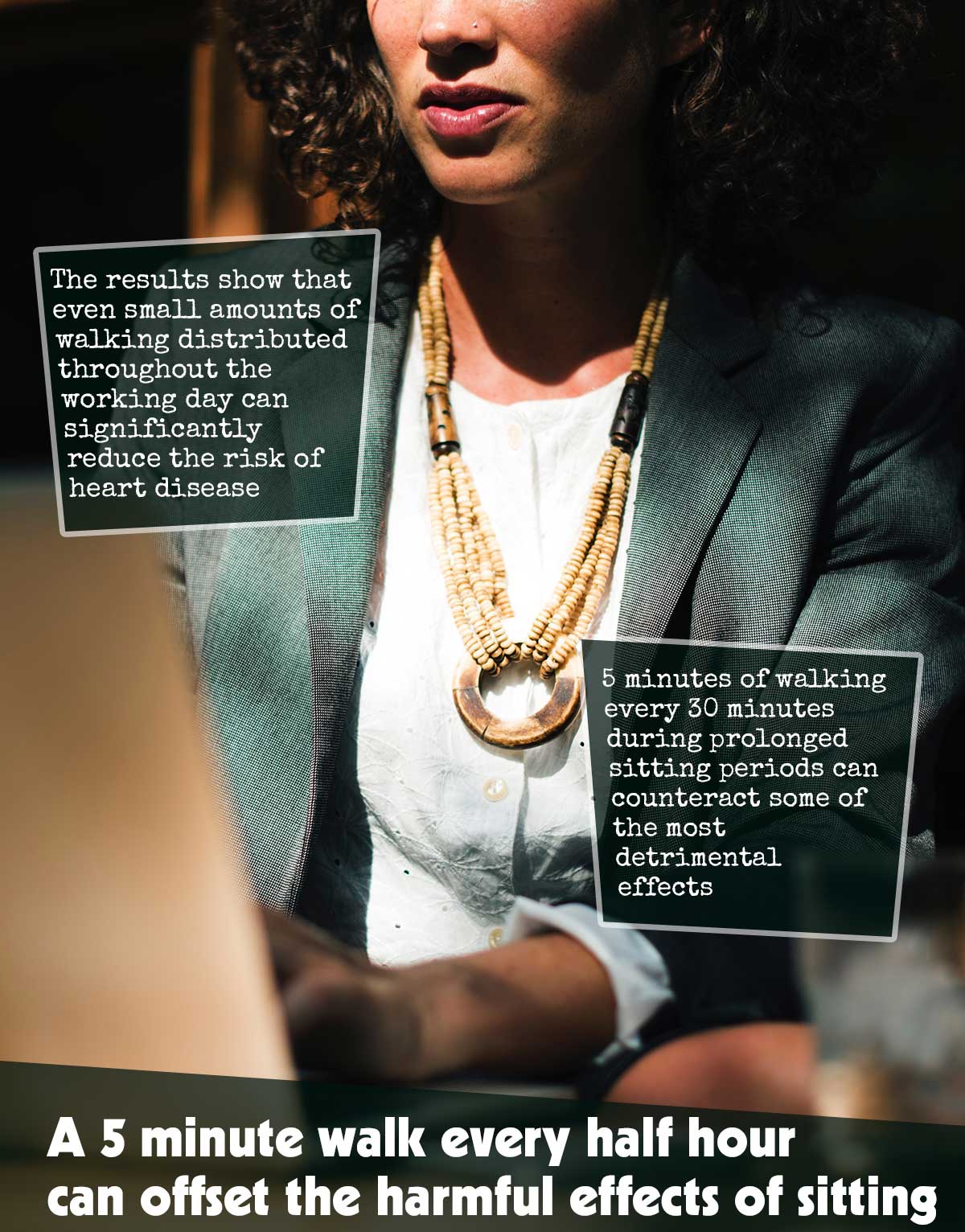Growing evidence indicates that prolonged sitting is harmful to health, even when exercising regularly. Following these conclusions, health professionals recommend all individuals sit less and move more.1✅ JOURNAL REFERENCE DOI: 10.1249/MSS.0000000000003109
But how frequently and for how long do we need to get up and move? What’s the minimum activity level necessary to counteract the health impact of a workday made up of sitting?
A study by exercise physiologists provides an answer: 5 minutes of walking every 30 minutes during prolonged sitting periods can counteract some of the most detrimental effects.
In contrast to other research that tested 1 or 2 activity options, this study tested 5 different exercise options: 1 minute of walking after every half an hour of sitting, 1 minute after one hour; 5 minutes every half an hour; 5 minutes every hour; and no walking.
Each of the eleven individuals who took part in the study came to the laboratory, where they sat in an ergonomic chair for 8 hours, getting up only for a bathroom break or their allocated exercise option of treadmill walking.
The researchers kept a close watch on each individual to make sure they didn’t over- or under-exercise and important cardiovascular health indicators such as blood sugar and blood pressure were routinely assessed. Individuals were given standardized meals and were permitted to read, work on a laptop, and make use of their phones throughout the sessions.
The researchers discovered the optimal movement amount was 5 minutes of walking every half an hour which was the only amount of walking that significantly reduced both blood pressure and blood sugar. This walking routine also had a significant impact on how the individuals responded to large meals, lowering blood sugar spikes by 58% in comparison to sitting all day.
A walk break taken every half an hour for 1 minute also provided modest blood sugar level benefits during the day, while walking every one hour (either for 1 minute or 5 minutes) provided no benefit.
All amounts of walking lowered blood pressure significantly by 4 to 5 mmHg in comparison to sitting all day. This is a significant reduction, comparable to the reduction expected from exercising every day for 6 months.
Levels of cognitive performance, fatigue, and mood were also routinely measured throughout the testing. All walking routines, other than walking 1 minute every 60 minutes, resulted in significant reductions in fatigue and significant mood improvements. None of the walking routines influenced cognition.
The effects on fatigue and mood are significant. Individuals have a tendency to repeat behaviors that are enjoyable and that make them feel good.
Individuals in this study were in their 40s, 50s, and 60s, and the majority didn’t have hypertension or diabetes.
The results show that even small amounts of walking distributed throughout the working day can significantly reduce the risk of heart disease as well as other chronic illnesses.




